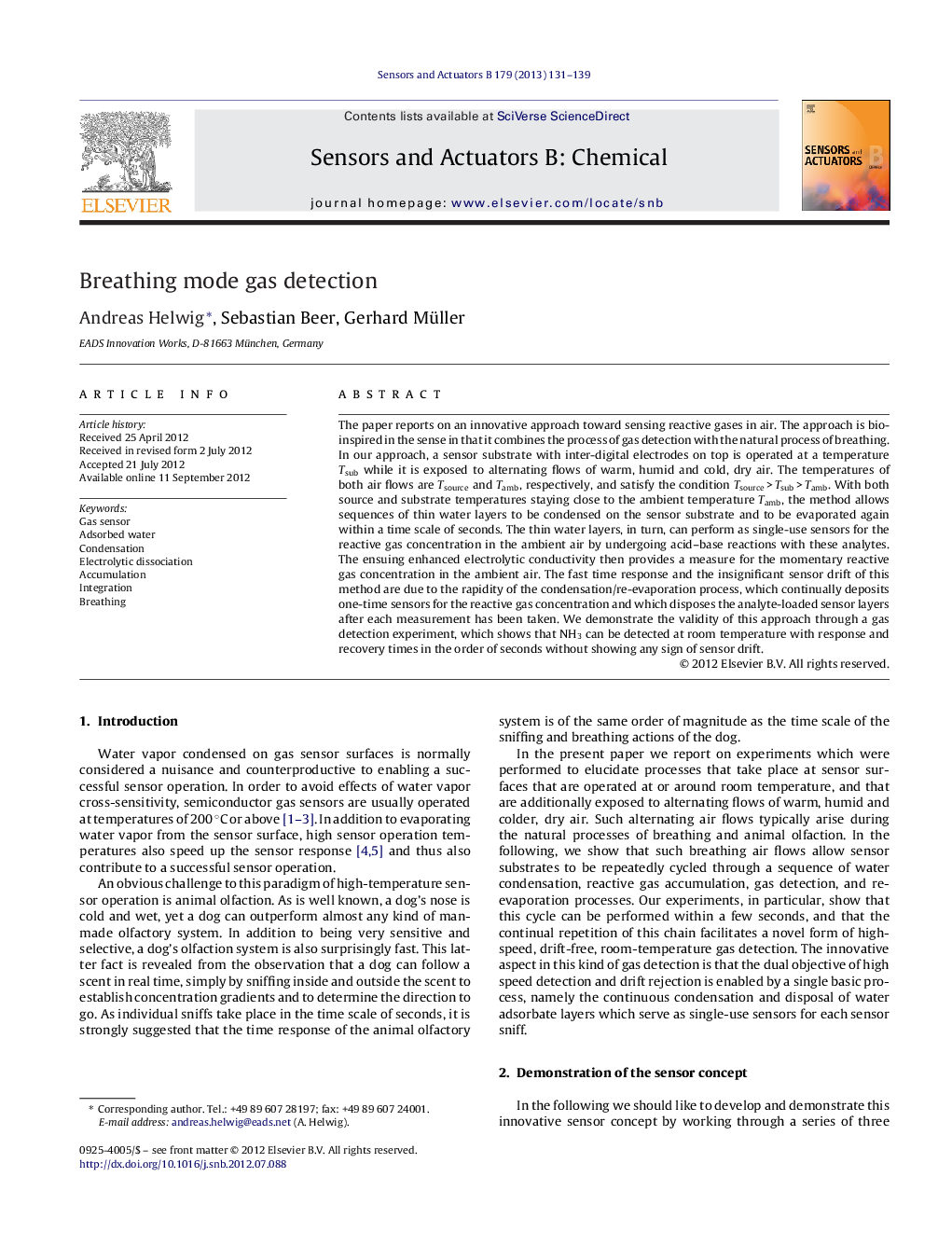| Article ID | Journal | Published Year | Pages | File Type |
|---|---|---|---|---|
| 743184 | Sensors and Actuators B: Chemical | 2013 | 9 Pages |
The paper reports on an innovative approach toward sensing reactive gases in air. The approach is bio-inspired in the sense in that it combines the process of gas detection with the natural process of breathing. In our approach, a sensor substrate with inter-digital electrodes on top is operated at a temperature Tsub while it is exposed to alternating flows of warm, humid and cold, dry air. The temperatures of both air flows are Tsource and Tamb, respectively, and satisfy the condition Tsource > Tsub > Tamb. With both source and substrate temperatures staying close to the ambient temperature Tamb, the method allows sequences of thin water layers to be condensed on the sensor substrate and to be evaporated again within a time scale of seconds. The thin water layers, in turn, can perform as single-use sensors for the reactive gas concentration in the ambient air by undergoing acid–base reactions with these analytes. The ensuing enhanced electrolytic conductivity then provides a measure for the momentary reactive gas concentration in the ambient air. The fast time response and the insignificant sensor drift of this method are due to the rapidity of the condensation/re-evaporation process, which continually deposits one-time sensors for the reactive gas concentration and which disposes the analyte-loaded sensor layers after each measurement has been taken. We demonstrate the validity of this approach through a gas detection experiment, which shows that NH3 can be detected at room temperature with response and recovery times in the order of seconds without showing any sign of sensor drift.
